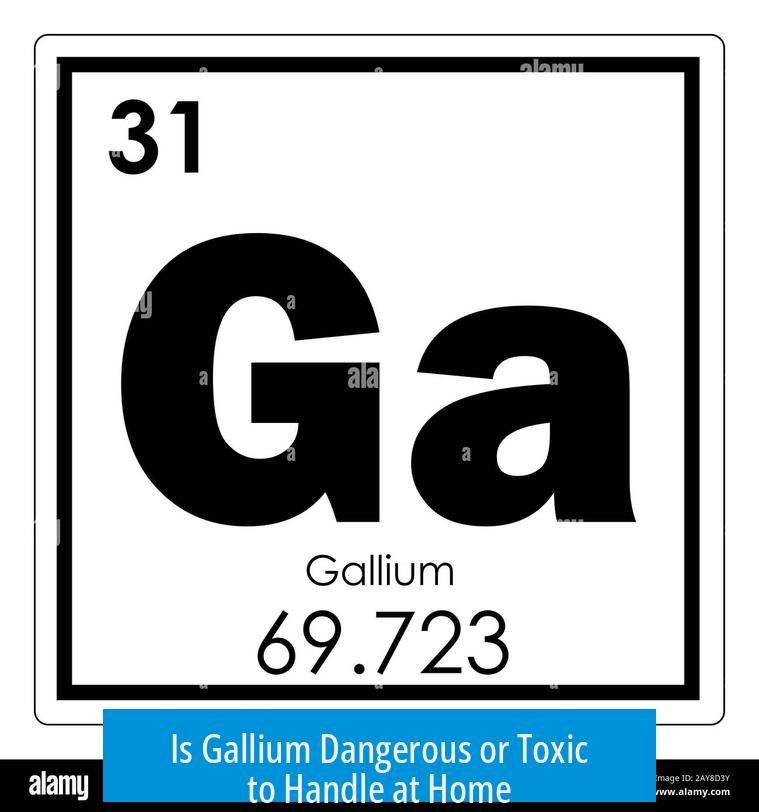Is Gallium Dangerous or Toxic to Handle at Home?

Gallium is not highly toxic for casual handling but can cause skin and eye irritation, and may be harmful if inhaled or ingested. It poses a significant risk to aluminum alloys and requires specific precautions during handling and transport.
1. Toxicity and Health Risks
Gallium is generally considered non-toxic in small amounts. It is not classified as a carcinogen. The Material Safety Data Sheet (MSDS) indicates possible irritation of skin and eyes.
- Inhalation: Gallium vapors can damage mucous membranes and upper respiratory tract tissue. Exposure should be minimized.
- Skin Contact: It can cause burns or irritation and may be absorbed through the skin; gloves are recommended when handling.
- Eye Contact: Causes burning sensations and damage to eyes.
- Ingestion: Harmful if swallowed; ingestion should be strictly avoided.
Although some hobbyists report no adverse effects from bare-hand contact, the difficulty in removing gallium residue and potential irritant effects suggest the use of gloves as a practical precaution.
2. Chemical Effects on Materials
Gallium aggressively damages aluminum and its alloys by causing embrittlement. This chemical interaction renders aluminum-based materials unsafe in contact with gallium.
- Gallium “spikes” aluminum, weakening structural integrity rapidly.
- It can cause irreversible damage to items such as aluminum cans, frames, or airplane parts.
- This property leads to strict regulations restricting gallium on aircraft.
3. Handling and Transportation Considerations
Gallium’s hazard to aluminum impacts its transport, especially on commercial flights:
- Trace amounts can raise airport security concerns.
- Despite reports of some travelers carrying small quantities without issues, regulations vary.
- Due to potential damage and security, it is advisable to avoid transporting gallium on planes.
4. Practical Recommendations for Home Use
- Wear gloves to avoid skin contact and ease cleanup.
- Avoid touching aluminum items during use.
- Prevent inhalation by using gallium in well-ventilated areas.
- Store gallium separately from aluminum alloys.
Key Takeaways
- Gallium is not highly toxic but can irritate skin, eyes, and respiratory tissues.
- It severely damages aluminum alloys, making contact hazardous to such materials.
- Use gloves to handle gallium to prevent direct skin contact and difficult residue removal.
- Transport restrictions apply, especially for air travel.
- With proper precautions, gallium handling at home is generally safe for hobbyists.
Is gallium toxic if I touch it with bare hands?
Gallium is not highly toxic on skin. Some users report no issues touching it briefly. However, it can cause mild skin irritation, so wearing gloves is recommended to avoid mess and difficulty washing it off.
Can gallium harm my eyes if it gets in contact?
Gallium can cause eye irritation or burns. It’s best to avoid any contact with eyes and use protective gear like goggles during handling.
Is inhaling gallium dangerous?
Yes, inhaling gallium dust or fumes may damage mucous membranes and upper respiratory tissue. Handling it in well-ventilated areas is advised.
Will gallium damage household items?
Gallium severely damages aluminum and its alloys. It makes aluminum brittle and ruins objects quickly. Avoid contact with aluminum surfaces.
Can I travel with gallium in my luggage?
Gallium is restricted on airplanes because it damages aluminum parts and may trigger security checks. Carrying gallium on flights is generally not allowed.





Leave a Comment